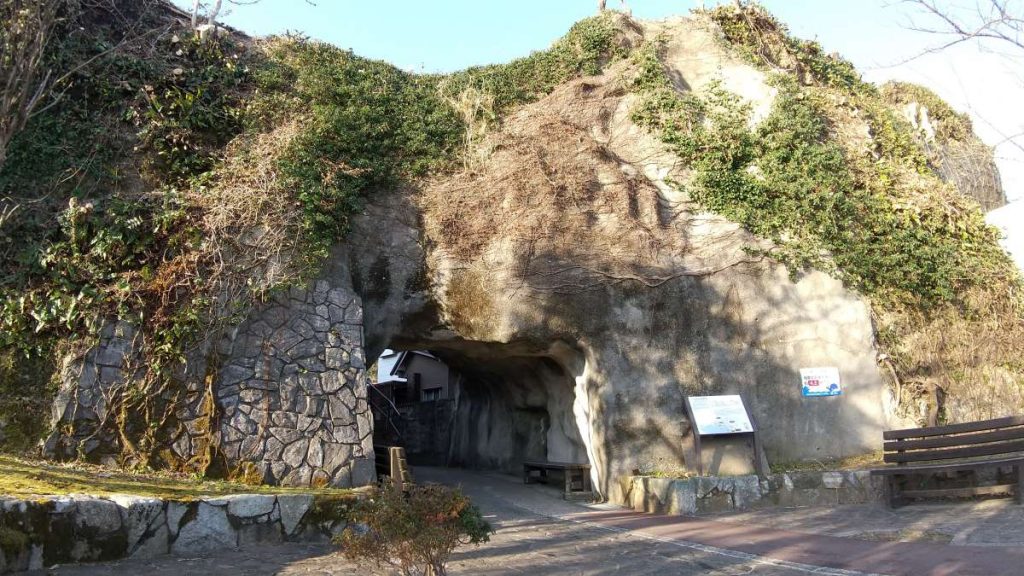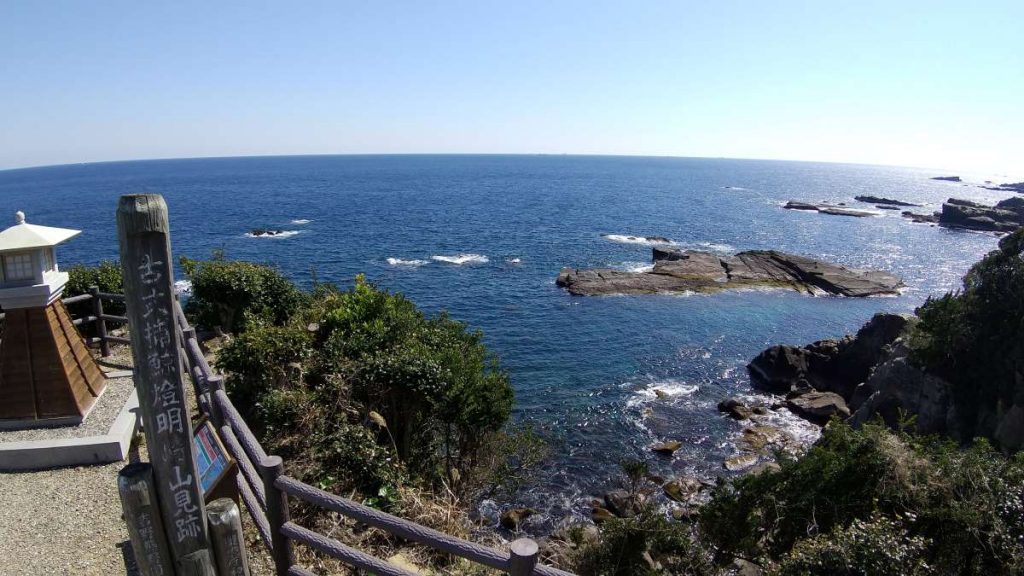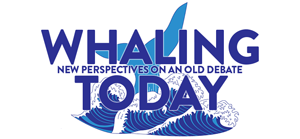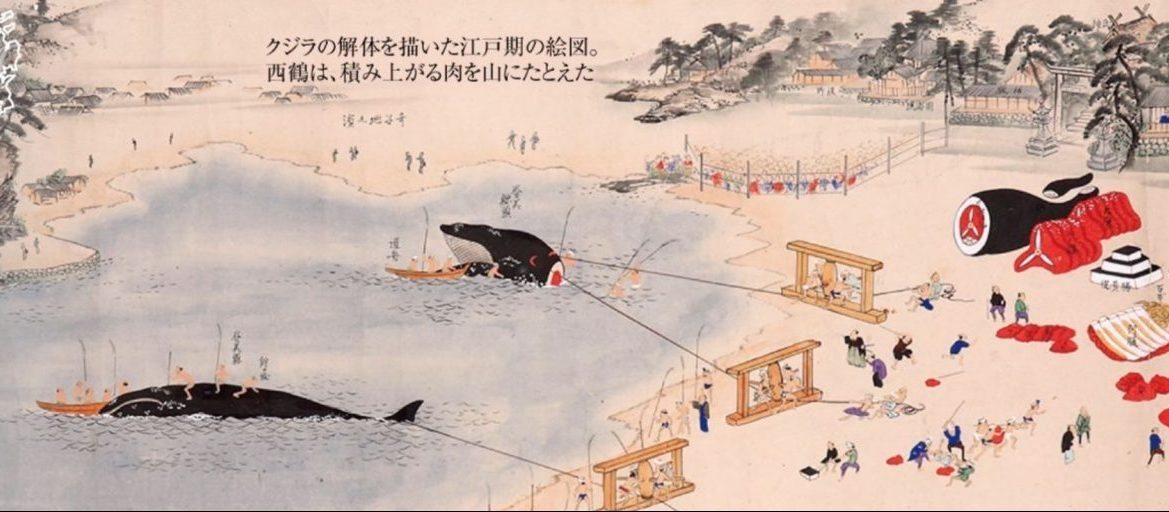Second in a series of five articles
Part 1: Whales in the Japanese Landscape: Natural Resources and Root of Manufacturing
The Japanese have been hunting whales since ancient times. It is impossible to consider the relationship between the Japanese people and the sea without examining the history of whaling.
This is the second of a series of five articles on “Whales in the Japanese Landscape.” The series is part of a larger ongoing collection published by the Sankei Shimbun in Japanese, titled “Tales of the Watatsumi” after the Japanese god of the sea.
In this part we take at the history around the origins of whaling in Taiji.
Traditional Japanese whaling involved a large fleet of boats, which worked closely with commanders on land as they hunted whales. It can be said that the techniques required to run such an operation were honed in war, and thus within them dwells the spirit of the warrior.
A gateway that feels like something out of a pirate ride at a theme park opens out toward Taiji Harbor in Wakayama Prefecture. “Sekimon” is a natural rock gateway that can be found in drawings of the area that date back to the Edo Period.
The Kiizokufudoki, a regional guide compiled during this period by authorities in the Kishu Domain (modern Wakayama) during the Edo period describes it this way:
A mountain has been shaved away into the shape of a gateway. If you go inside, it connects to village dwellings. It is said that this is where the Wada household was located.
Wada Family of Village Lore
The Wada family that built homes behind Sekimon was the family that founded whaling in Taiji. As the Kiizokufudoki states:
In 1606, a man named Wada Chube Yorimoto negotiated with two others, Ronin Iemon of Sakai in Senshu (modern Osaka) and Denji of Bishu Chitagun Morozaki (modern Aichi), to begin harpoon whaling.
The year 1606 was six years after the Battle of Sekigahara, a famous and decisive struggle that is widely considered to mark the end of Japan’s Sengoku, or “Warring States,” Period, a time of endless wars and conflict.
The same document also touches on the ancestry of the Wada line, mentioning that “according to family lore” the family was related to a samurai commander during the Kamakura Period, the well-known warrior Asahina Yoshihide.
The father of Asahina Yoshihide was Wada Yoshimori, part of a military group in Japan’s central Kanto region and a powerful vassal under Kamakura shogun Minamoto no Yoritomo. According to a famous history of the Kamakura Period, both Yoshimori and Yoshihide were killed in the “Wada Battle,” which resulted in the complete destruction of the Wada clan.
An Alternate Ending?
However, according to the Kiizokufudoki:
After the Wada Battle, Yoshihide drifted at sea. He then confined himself to the region (of Taiji), and for generations the family lived in the village.
So actually he didn’t die, but rather drifted ashore in Taiji…
According to this legend, it was actually the descendants of a warrior from central Japan that started whaling in Taiji.

Another legend portrays Yoshihide as a brave warrior, who once “grabbed three sharks from the sea and surfaced with them in front of a royal ship.”
He was a samurai known for his valor.
Like a Victorious Navy
The atmosphere of a whaling operation is entirely different from that of a standard fishing operation in which fishermen deal with creatures far smaller than themselves. Traditional whaling was more “hunting” than “fishing,” with the men squaring off against giant animals. The hunts were similar to military operations conducted on the open sea.
I stood on Cape Tomyozaki in Taiji, which juts out into the Kumano Sea. And based on various materials I’d read, I imagined what the whale hunts must have looked like back then.
Both whale lookouts and the leaders of the hunts were stationed on Cape Tomyozaki overlooking the ocean. The commanders were called Danna, and their ranks were filled from the Wada family.
Down below, up to 30 boats with 400 men set out to sea. There were various types of specialized boats, from the swift “Sekobune” hunting boats that carried 15 men and were powered by 8 oars, to the “Mossobune” boats that mainly carried equipment.
The brightly painted boats floated among the waves, awaiting orders that came from land by smoke signal or flag.
When the “whale sighted” signal went out, the fleet of Sekobune boats shot ahead like arrows. They surrounded the whale, then the men beat on their boats with wooden mallets, driving it toward the shore.

On the Battlefield
Whales are highly sensitive to sound. The whale would repeatedly dive and surface, slowly swimming toward land. Sometimes the whale was driven this way for distances of over 10 kilometers (6 miles).
Once the whale was close to land, the leaders gave the order for the fleet to deploy its nets.
When the animal was ensnared, the signal went out to “throw the harpoons.” The harpooners positioned themselves like modern javelin throwers poised on the bobbing boats, and their harpoons traced parabolas through the sky.
The high-arcing throws used gravity to pierce the thick skin of the whale. First several, and then dozens of harpoons found their mark. The men, wearing only loincloths, were showered in the blood that sprayed from the dying whale, dripping down from their heads until they were covered in red.
Eventually the movements of the whale grew weaker. A lone man climbed up onto its back, cut a hole in its nostrils and threaded a rope through to secure it. A log was placed between two Mossobune boats, and the whale was secured to it, sandwiched between the boats.
As the fleet slowly headed back to the harbor, it probably looked very much like a victorious navy.
A Longer History?
Did Whaling start in Aichi from the Sengoku Period?
You can say that traditional whaling applied skills that were developed during wartime. The men had strong physical builds from combat.
War is an industry that requires values that cannot be converted into money – bravery, decision-making, execution, and in extreme circumstances even giving your life. Through the use of this war-mechanism, for the first time the bountiful resources of nature were transformed and given economic value.
These are the words of Shinichi Nakazawa, an anthropology scholar and professor at the Kyoto University Kokoro Research Center. The economic process that Iharu Saikaku identified (the Edo-Period author who wrote about Taiji ー see Part 1) was preceded by a battle to overcome a giant creature. This battle involved more than profits and losses, it required a spiritual vitality.
An influential line of thought states that systemized traditional whaling began in modern Aichi Prefecture, which was a violent hotbed during Japan’s Warring States Period. According to Edo Period texts, during the Genki Period from 1570 – 1573, a fleet of seven to eight boats used harpoons to hunt whales near Cape Morozaki on the Chita Peninsula.
There are records that Oda Nobunaga (a powerful Japanese lord during the Sengoku Period) gifted whale meat to the royal court, and the possibility exists that it was caught strategically (rather than opportunistically, as from beachings).
The “Denji of Bishu Chitagun Morozaki,” mentioned in the Kiizokufudoki, could have brought these early whaling techniques to Taiji.
The Pride of the Warrior
If the Wada clan was related to Asahina Yoshihide, then the link between whaling and the warrior class becomes more clear. But multiple scholars have pointed out that this relationship may not be factual.
There are many legends around Yoshihide, a powerful and famous samurai who became the subject of kabuki and noh performances. Kaharu Suzuki, a scholar of this era in Japanese history, said that this family connection could have been fabricated to establish a politically useful family line to Tokugawa Yorinobu, the first daimyo of the Kii region where Taiji is located.
The Kii authorities granted the Wada clan the right to wear a katakana and adopt a formal name as a local samurai. The family was also given military responsibilities in case of emergency. There is little doubt that the pride of the warrior was imparted to the whalers.
Series continues in Part 3.
(Read the column in Japanese at this link.This article is published in cooperation with the Institute of Cetacean Research. Let us hear your thoughts in our comments section.)
RELATED: In Chiba Prefecture’s Minamiboso, Fighting to Save Coastal Whaling Traditions
Author: Hideaki Sakamoto
Hideaki Sakamoto is a member of the Sankei Newspaper’s Osaka editorial committee for the local news division.This series aims to experiment with new approaches in examining the spiritual history of Japanese that interact with the sea.

